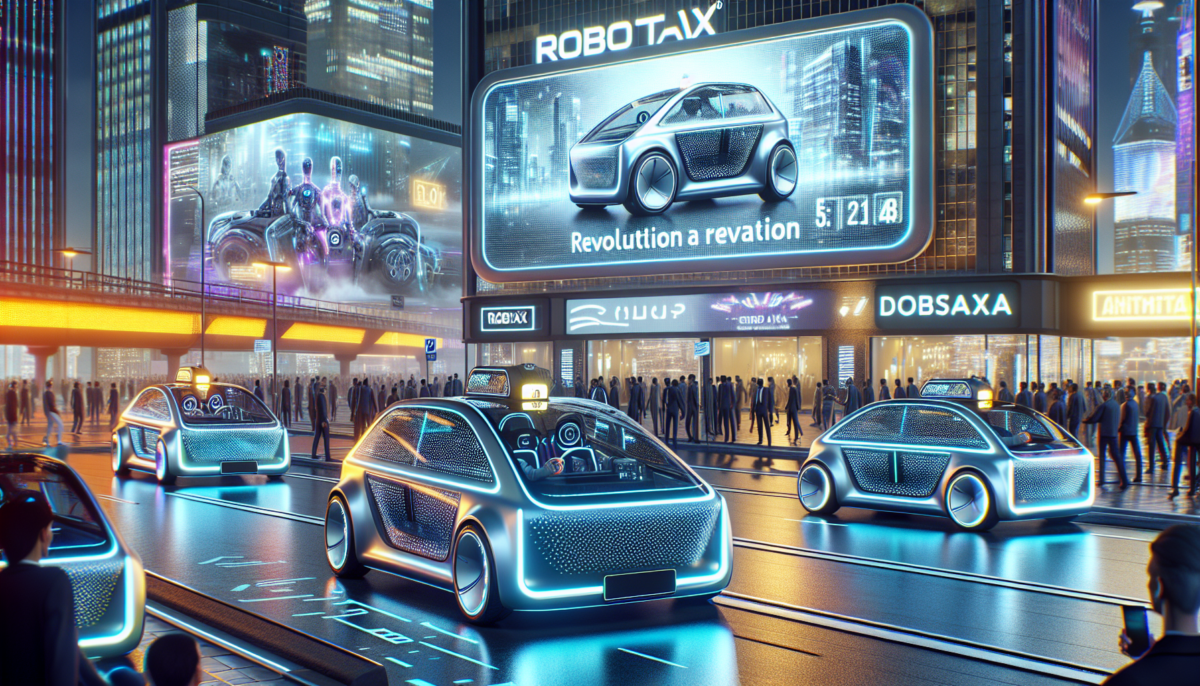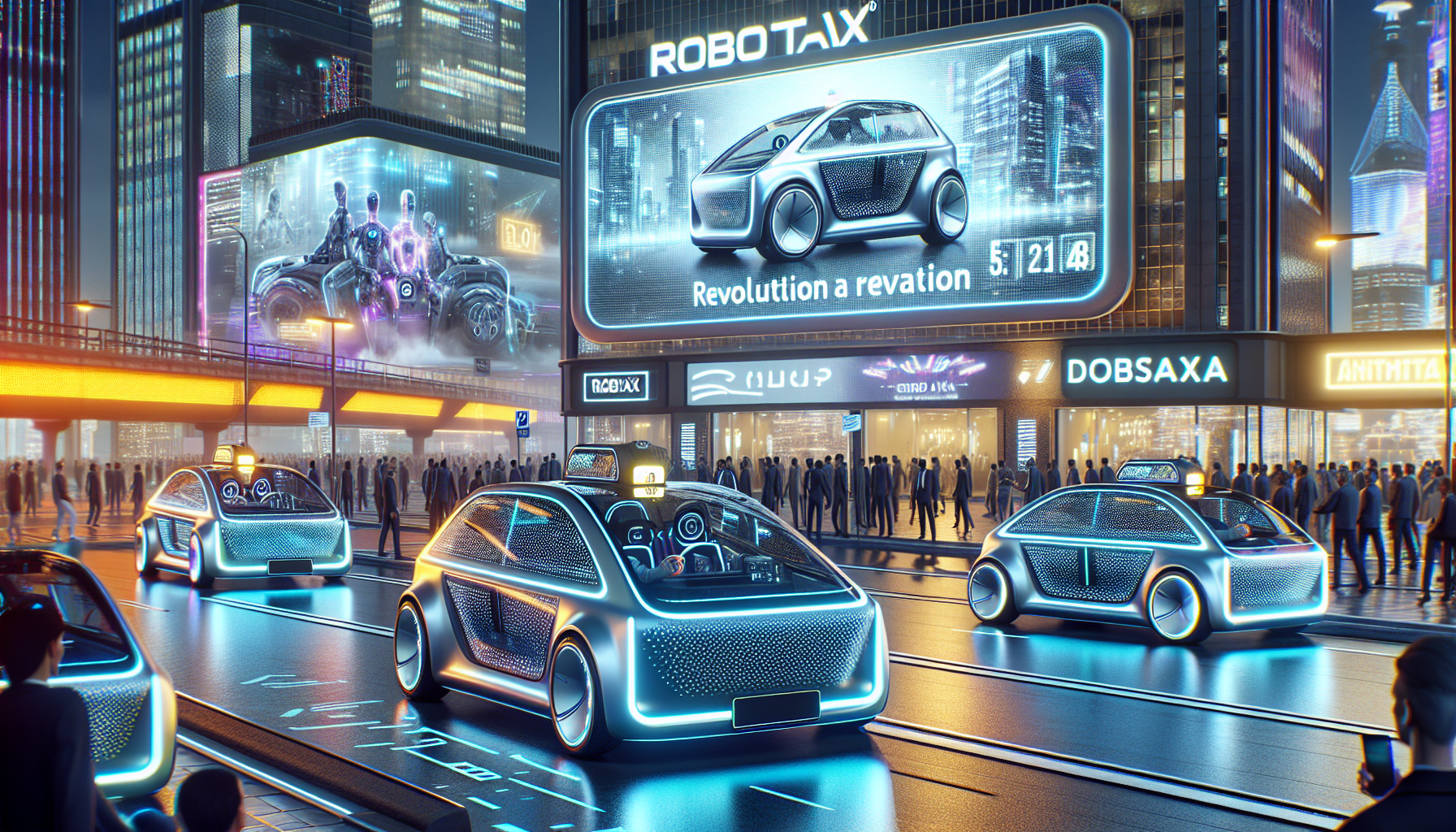Tesla’s Revolutionary Robotaxi Showcase Set for Tomorrow: The Transportation Revolution Has Arrived!
We independently review everything we recommend. When you buy through our links, we may earn a commission which is paid directly to our Australia-based writers, editors, and support staff. Thank you for your support!

Concise Overview
- Tesla plans to disclose its inaugural vehicle designed without a steering wheel or pedals, representing a major advancement toward complete autonomy in vehicles.
- The specialized robotaxi, named “CyberCab,” is anticipated to shake up the taxi and ride-sharing industries through its low-cost, driverless functionality.
- Tesla’s Full Self-Driving (FSD) technology has been actively developed for almost ten years, with notable progress in recent times.
- Primary hurdles for Tesla include the development of software, production of hardware, obtaining regulatory clearance, and maintaining cost-effectiveness.
- Tesla’s fleet of robotaxis could establish a novel revenue-sharing model, enabling car owners to register their vehicles for the service.
- The forthcoming “We, Robot” event may also highlight Optimus, Tesla’s humanoid robot, which has potential uses in both commercial and residential environments.
Tesla’s Transformative Robotaxi Launch: A Preview of Future Transportation

Tesla is ready to once again transform the transportation sector. Tomorrow, at 1 PM AEDT, the unveiling of Tesla’s first fully autonomous vehicle—designed without steering wheels or pedals—will take place. This event comes after nearly ten years of focused development on autonomous technology, serving as a landmark in Tesla’s pursuit of a driverless future.
Tesla’s Path to Autonomy: From Autopilot to Robotaxis
Tesla debuted its Autopilot system in 2013, originally conceived as a driver’s aid. However, the company’s aspirations quickly expanded. By 2016, Tesla redirected its attention to attaining full autonomy, a goal recognized as one of the most formidable technological challenges of our time.
The aim of fully autonomous vehicles transcends mere convenience; it encompasses safety and efficiency. Tesla and similar companies pursuing this innovation regard autonomous vehicles (AVs) as a potential means to significantly decrease road accidents stemming from human mistakes, which could save countless lives each year.
The Economic Implications of Robotaxis
Tesla’s robotaxi fleet, known as “CyberCab,” is set to revolutionize the taxi and ride-share landscapes. By removing the necessity for a human driver and increasing passenger capacity, Tesla intends to considerably cut operational expenses, rendering conventional ride-sharing services like Uber and traditional taxis somewhat obsolete. The expenses associated with Tesla’s AV technology—essentially incorporating a computer and cameras—are minor compared to the ongoing costs tied to human drivers.
Full Self-Driving (FSD): The Path to Autonomous Operation
While Tesla’s Full Self-Driving (FSD) technology has encountered various delays, the company has maintained its dedication. FSD Beta launched to a select group of users in 2020, and since that time, it has experienced considerable enhancements. Although the current FSD operates under supervision, Tesla is progressing towards achieving completely unsupervised driving capabilities.
With the reveal of CyberCab, Tesla appears optimistic that its software is nearing a level that could surpass human driving skills. Internally, Tesla’s software is likely several iterations ahead of what is currently accessible to the public, indicating rapid advancements.
Principal Challenges: Software, Hardware, Regulation, and Costs
As Tesla gears up to present its robotaxi, multiple essential challenges must be addressed to turn this vision into reality.
Software Development
The triumph of the robotaxi depends on Tesla’s capacity to finalize its autonomous driving software. Although many users are already utilizing the supervised iteration of Full Self-Driving, the unsupervised variant needed for a robotaxi must be flawless. Any setbacks in software development could lead to thousands of vehicles without the ability to drive pending a software update.
Hardware Production
While Tesla aims to unveil the CyberCab’s design at the 10.10 event, it will likely take an additional 18 months before the first robotaxis become operational. Tesla’s efficient, high-volume manufacturing approach will be imperative for mass-producing these vehicles. The company is expected to invest substantially to aggressively scale production to meet the massive demand for robotaxis.
Regulatory Approval
Even if Tesla successfully finalizes the software and hardware, securing regulatory approval represents a significant challenge. The company will need to persuade regulators that its robotaxi is safer than human-operated vehicles, necessitating extensive data gathering and reporting. Additionally, resistance from conventional transport industries and labor unions may impede the deployment of autonomous vehicles.
Cost Effectiveness
Tesla’s robotaxi service must remain both economical and accessible to draw in customers. There are still uncertainties regarding Tesla’s strategy for vehicle maintenance and charging. The company may need to construct dedicated Supercharging and Maintenance Centers in each city to support the fleet. Moreover, Tesla’s suggested revenue-sharing scheme might allow vehicle owners to sign up for the fleet, generating income from the rides offered.
How to Stream the 10.10 Robotaxi Launch Event
Tesla will broadcast the event live on X (formerly Twitter). The event will occur at various times across time zones:
- Mountain Daylight Time (MDT): 8:00 PM
- Central Daylight Time (CDT): 9:00 PM
- Eastern Daylight Time (EDT): 10:00 PM
- Brasília Time (BRT): 11:00 PM
- Coordinated Universal Time (UTC): 2:00 AM on October 11
- British Summer Time (BST): 3:00 AM on October 11
- Central European Summer Time (CEST): 4:00 AM on October 11
- Moscow Time (MSK): 5:00 AM on October 11
- India Standard Time (IST): 7:30 AM on October 11
- China Standard Time (CST): 10:00 AM on October 11
- Japan Standard Time (JST): 11:00 AM on October 11
What About Optimus?
The event is named “We, Robot” for a reason. Tesla considers both its vehicles and its humanoid robot “Optimus” to be vital components of its robotic future.
Initially introduced in 2021, Optimus has undergone substantial revisions. At the upcoming event, we might witness the third iteration of Optimus, boasting advanced features such as 22 degrees of articulation in its hands. This upgrade will enhance Optimus’s ability to undertake a wider variety of tasks, making it more applicable for both commercial and private use.
Optimus could also contribute to Tesla’s robotaxi initiative. Picture a future where Optimus is responsible for charging Tesla’s robotaxis or managing last-mile deliveries. The potential for Optimus to collaborate with the robotaxi fleet is significant, and we may get an early look at this integration during the event.
Conclusion
Tesla is on the brink of launching its first fully autonomous vehicle, the CyberCab robotaxi, which could transform the transportation sector. The eagerly awaited “We, Robot” event is expected to highlight Tesla’s advancements in Full Self-Driving technology and provide insight into the future of autonomous transport. With obstacles to navigate such as software development, hardware manufacturing, regulatory approval, and economic viability, Tesla’s success in the robotaxi market is not guaranteed. Nevertheless, if successful, the benefits could be substantial for both the company and its customers. Moreover, the event might unveil updates on Optimus, Tesla’s humanoid robot, which could also redefine the landscape.
Q&A
Q: What will Tesla reveal at the “We, Robot” event?
A:
Tesla is predicted to unveil its first fully autonomous robotaxi, the CyberCab, which operates without a steering wheel or pedals. In addition, Tesla may provide updates regarding Optimus, its humanoid robot.
Q: How close is Tesla to attaining fully autonomous driving?
A:
Tesla has achieved substantial milestones in Full Self-Driving (FSD) technology, although it remains in the supervised stage. The launch of the robotaxi implies that Tesla believes it is nearing the finalization of unsupervised, fully autonomous driving capabilities.
Q: What are the primary challenges Tesla encounters in deploying the robotaxi?
A:
Major challenges include completing the autonomous driving software, increasing hardware production, securing regulatory approval, and ensuring the cost of the service is attractive to customers.
Q: Will Tesla’s robotaxis be accessible to the public immediately after the event?
A:
No, the robotaxi is not anticipated to
